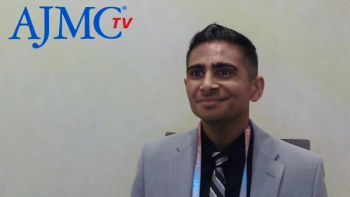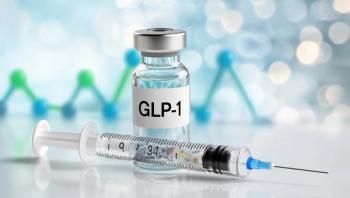
For Obesity and HFpEF, Tirzepatide Cuts Risk of CV Death or Worsening HF by 38%
Key Takeaways
- Tirzepatide reduced cardiovascular death or heart failure worsening by 38% in patients with obesity and HFpEF, compared to placebo.
- The trial showed significant weight loss and improved insulin sensitivity, with patients losing an average of 13.9% body weight at 52 weeks.
Payers and employers have tightened access to the glucagon-like peptide 1 receptor agonist class once these therapies became more commonly prescribed for obesity.
Tirzepatide, the powerful dual agonist that brings weight loss while controlling type 2 diabetes (T2D), now has more data behind it: For patients with obesity and heart failure with preserved ejection fraction (HFpEF), it sharply cuts the risk of dying from a cardiovascular (CV) event or seeing HF worsen, prompting more medication or hospitalization.
Results presented today at the American Heart Association Scientific Sessions in Chicago show that tirzepatide reduced the risk of CV death or HF worsening by 38% compared with placebo. The SUMMIT trial involved 731 adults, including 54% women, who were followed for least 52 weeks (HR, 0.62; 95% CI, 0.41-0.95; P = .026). Worsening HF events drove the results, occurring in 29 patients (8.0%) in the tirzepatide group vs 52 patients (14.2%) in the placebo group.
The findings were simultaneously published in The New England Journal of Medicine.1 Eli Lilly, which markets tirzepatide as Mounjaro to treat T2D and as Zepbound to treat weight loss, paid for the study.
Tirzepatide is an agonist of glucose-dependent insulinotropic polypeptide (GIP) and glucagon-like peptide 1 (GLP-1) receptors. It works by
But despite its dual mechanism, tirzepatide has
According to the CDC,
The findings from SUMMIT offer some of the most compelling evidence yet that treating obesity with medication could avert long-term health problems and associated costs; as lead author Milton Packer, MD, of Baylor University Medical Center explained in a press conference Friday, weight loss depletes the “angry” fat cells that make up adipose tissue, which triggers inflammation and causes real damage.
“It is not obesity that drives this process,” Packer said. “It is visceral adiposity that drives this process. This is fat around the major organs of the body, particularly fat around the heart. When it becomes expanded, it changes its biology and starts secreting proteins and other molecules that cause fluid retention around the kidney and causes inflammation systemically and within the heart, causing fibrosis.”
Jennifer E. Ho, MD, FAHA, of Harvard Medical School, who was invited to comment on SUMMIT, described it as “practice changing“ even though troubling questions remain. Abandonment rates for GLP-1s among patients who take them for weight loss remain high, she said, and when this happens, the weight is regained.
“A lot of future work needs to be done,” she said, “In thinking about implementation, there are many, many barriers that our patients and our providers face, including access, including cost, including health inequities, including provider expertise to really guide and initiate these therapies successfully.”
Both Packer and Ho said they hoped having evidence that tirzepatide improves HFpEF outcomes while treating obesity would coax wary payers to increase access for patients who meet more refined criteria.
Packer said GLP-1 access problems are due to the "sheer number" of Americans who are obese. Payers and employers, he said, are frightened when they contemplate the cost: "They look at their annual budget, and they’re in pain."
Additional results are as follows1:
- There were 364 patients in the tirzepatide group and 367 in the placebo group. The median duration of follow-up was 104 weeks.
- Patients were well balanced by age and by body mass index (BMI); the tirzepatide group was an average of 65.5 years; placebo, 65.0. The average BMI for the tirzepatide group was 38.3 kg/m2; placebo, 38.2 kg/m2. Equal numbers in each arm were New York Heart Association Functional Classes II and III/IV.
- At 52 weeks, the mean (SD) change in the Kansas City Cardiomyopathy Questionnaire-Clinical Summary Score was 19.5 (1.2) in the tirzepatide group vs 12.7 (1.3) in the placebo group. This is a patient-reported measure of symptoms and physical limitations.
- At 52 weeks, the tirzepatide group bested the placebo group in a 6-minute walk test by 18.3 meters and had lost an average of 13.9% body weight vs 2.2%, for a difference of 11.6%.
- Changes at 52 weeks in C-reactive protein were a reduction of 38.8% for the tirzepatide group and a reduction of 5.9% for the placebo group.
- The main adverse events that caused patients to stop taking the drug were gastrointestinal issues; these occurred in 23 patients (6.3%) in the tirzepatide group and in 5 patients (1.4%) in the placebo group.
- Subgroup results showed that the biggest benefits for tirzepatide vs placebo occurred among patients at least 65 years of age vs those younger than 65 years; among those with a baseline BMI below 35 kg/m2 vs those with a BMI of 35 kg/m2 or higher; and among those who had not had recent HF decompensation vs those who had.
- The authors took note of the differences in patients with natural peptide (NT) measures above and below the normal cutoff point for trials. Taking tirzepatide offered greater benefit among those with NT-proBNP below 200 pg/mL vs those with NT-proBNP at least 200 pg/mL, yet patients with the lower NT levels would have been left out of many recent studies. “Taken collectively, these findings suggest that a requirement for markedly elevated levels of natriuretic peptides to initiate treatment might exclude many patients with obesity-related heart failure with preserved ejection fraction from the benefits of tirzepatide,” they wrote.
- There was little difference in the degree of improvement between tirzepatide and placebo across patients with and without a history of T2D, with the degree of benefit slightly favoring those with T2D; there was also a slight benefit for those patients also taking a mineralocorticoid receptor antagonist.
The press briefing brought some lively discussion when Packer was asked about the fact that while small, and not statistically significant, there were more adjudicated CV deaths in the study drug arm (8 vs 5). Packer responded there were other data from trials with many more events; he likened numbers that small to a flip of a coin.
The significance of SUMMIT, he said, was that
“The SUMMIT trial is the first trial in patients with HFpEF and obesity that had major heart failure outcomes as the primary prespecified end point,” Packer concluded.
References
1. Packer M, Zile MR, Kramer CM, et al; SUMMIT Trial Study Group. Tirzepatide for heart failure with preserved ejection fraction and obesity. N Engl J Med. Published online November 16, 2024. doi:10.1056/NEJMoa241002
2. Emmerich SD, Fryar CD, Stierman B, Ogden CL. Obesity and severe obesity prevalence in adults: United States, August 2021-August 2023. National Center for Health Statistics data brief 508. CDC. September 2024. Accessed November 16, 2024.
3. Shaw ML. Semaglutide enhances heart failure outcomes in obesity. AJMC®. August 30, 2024. Accessed November 16, 2024.
Newsletter
Stay ahead of policy, cost, and value—subscribe to AJMC for expert insights at the intersection of clinical care and health economics.















































